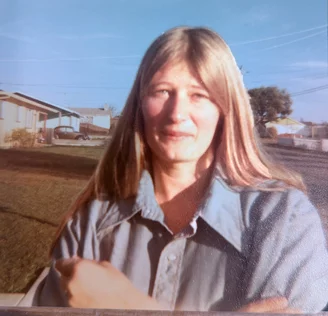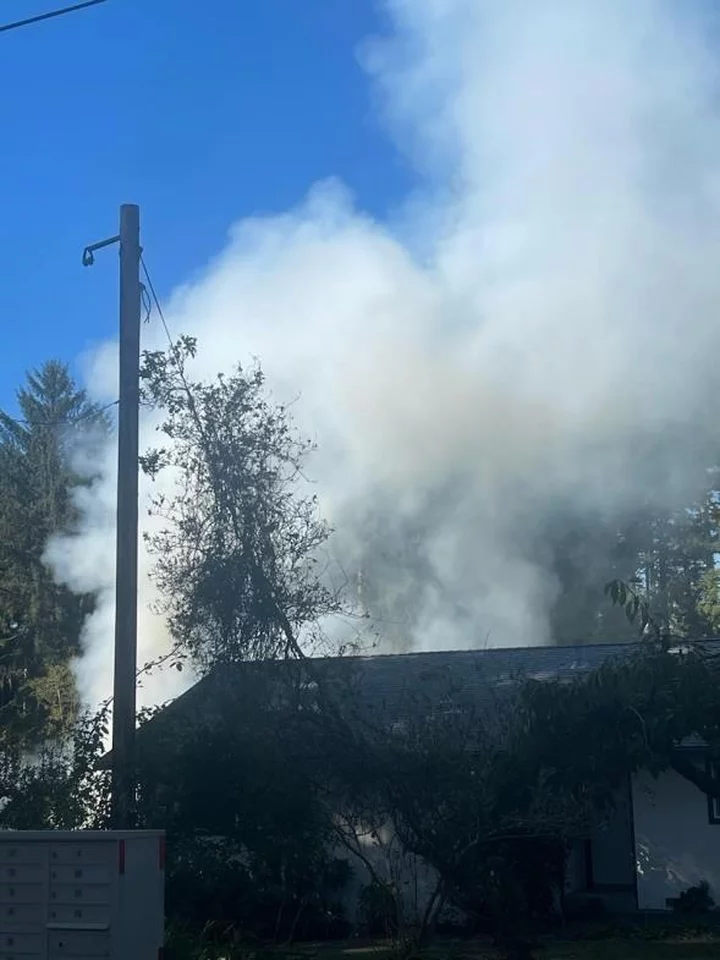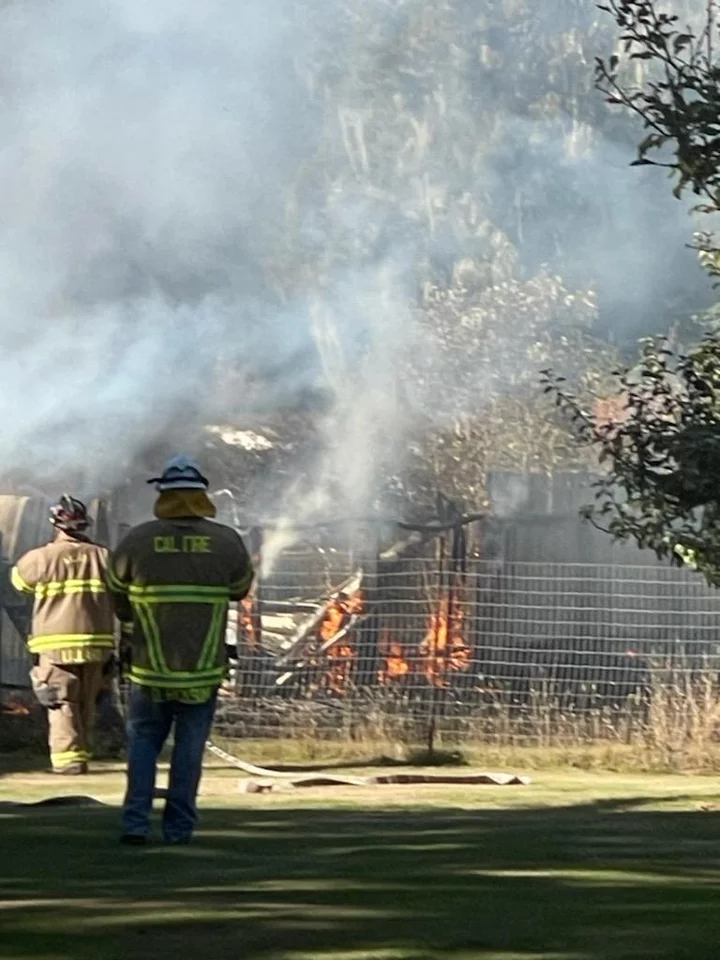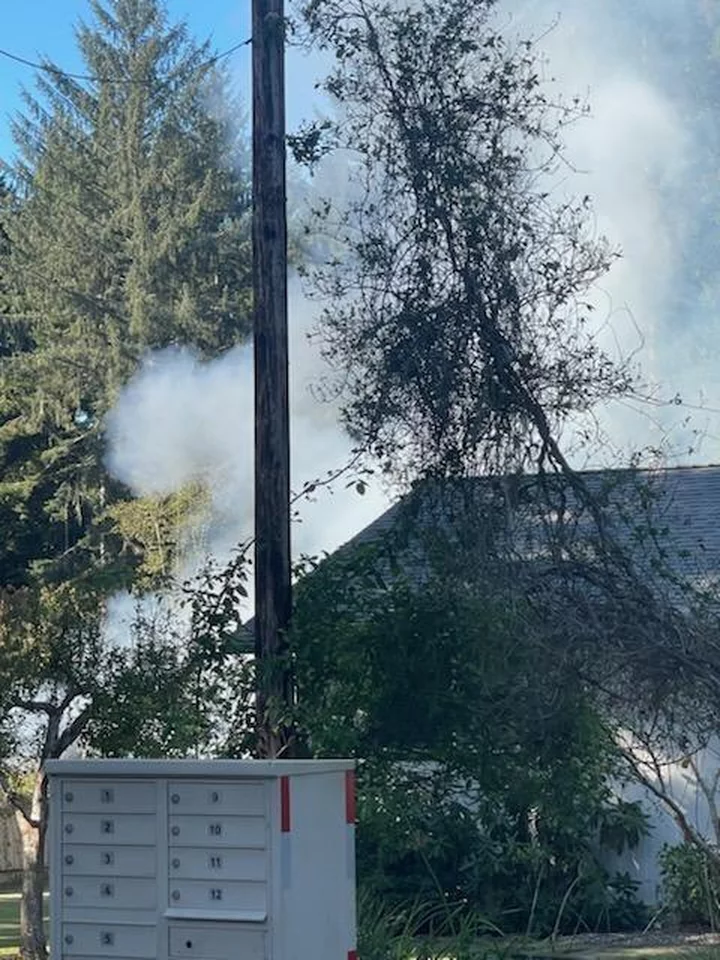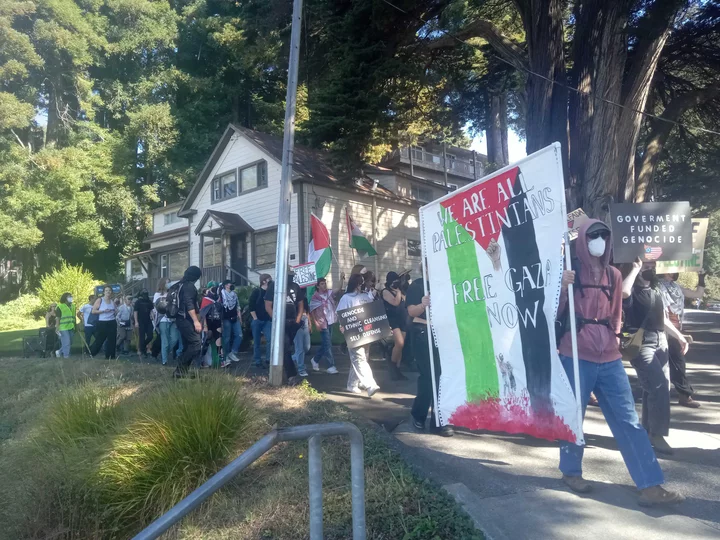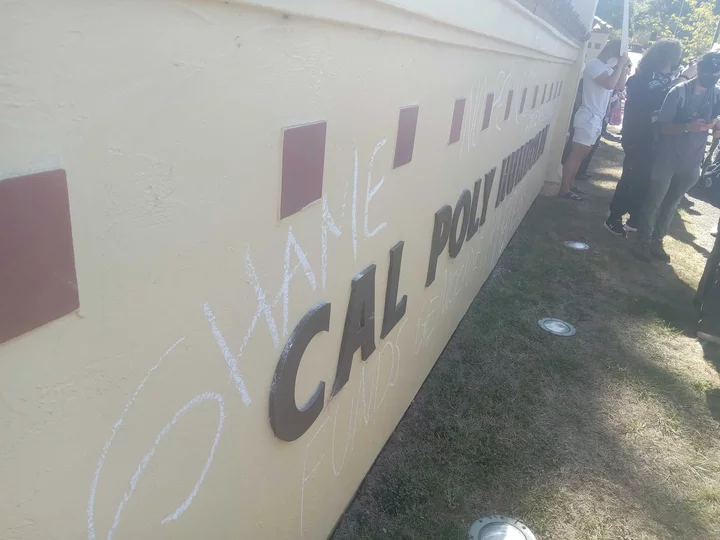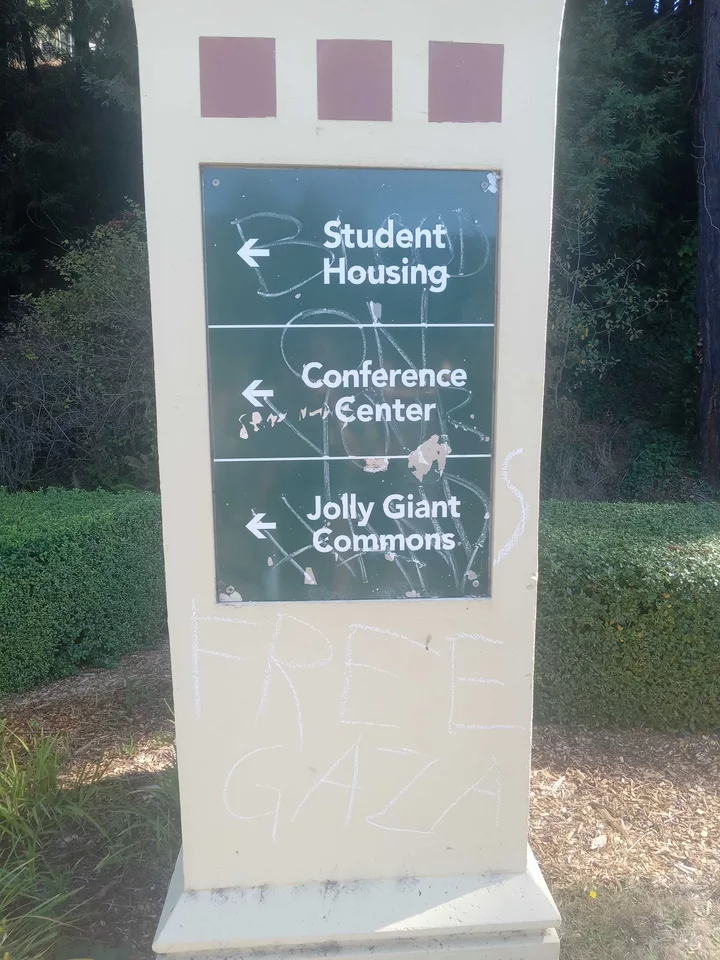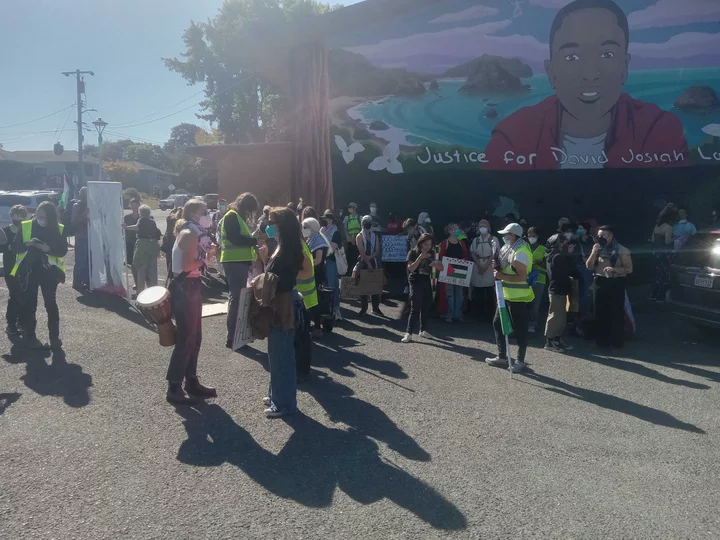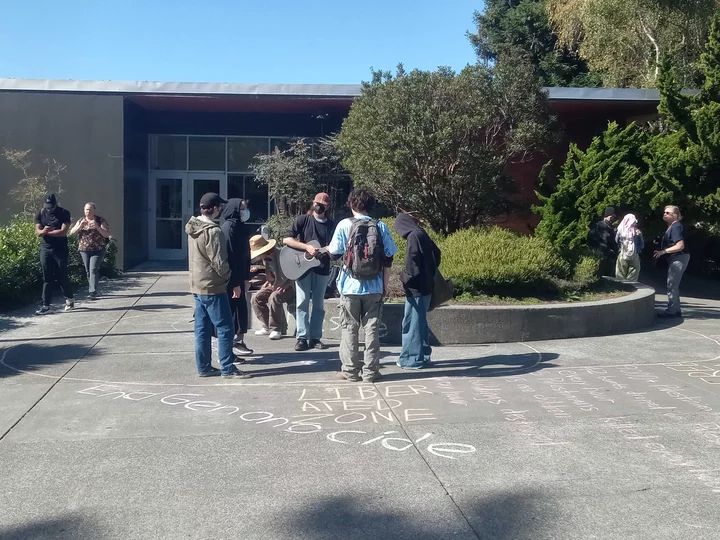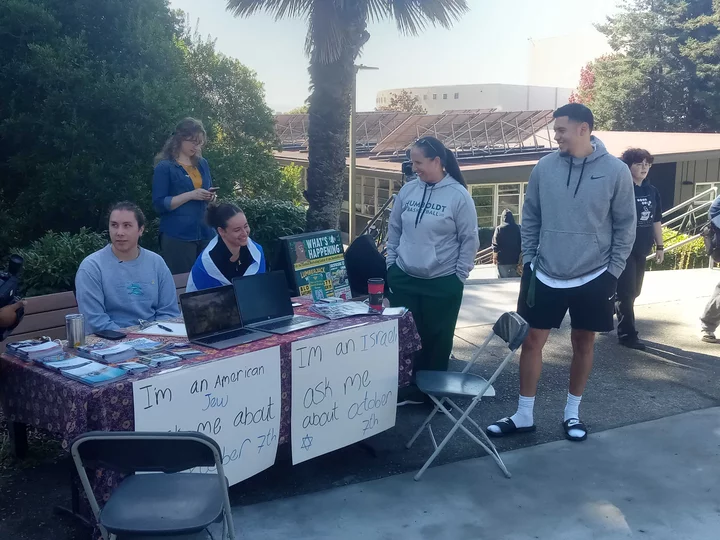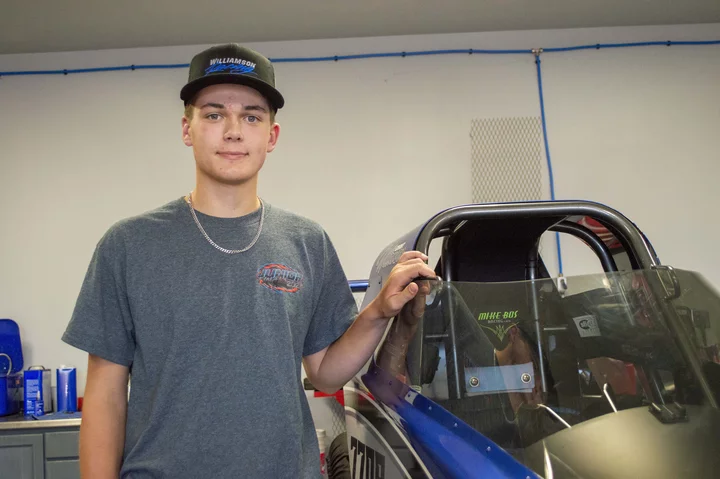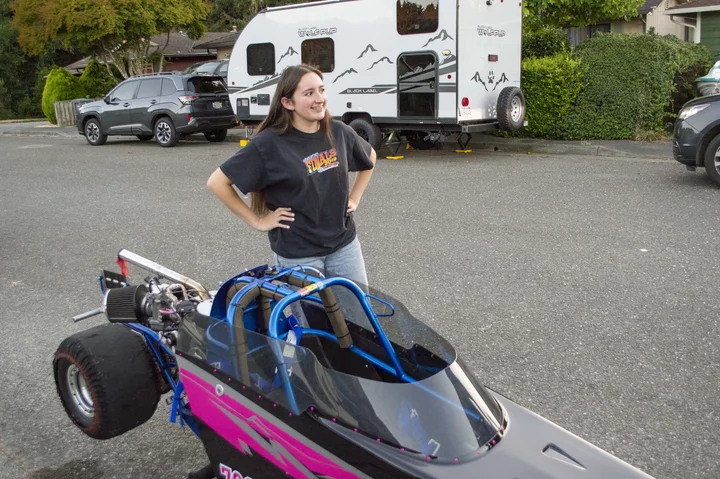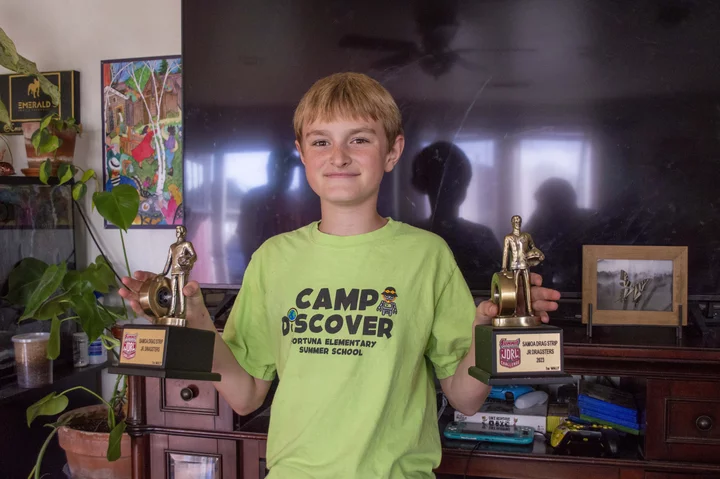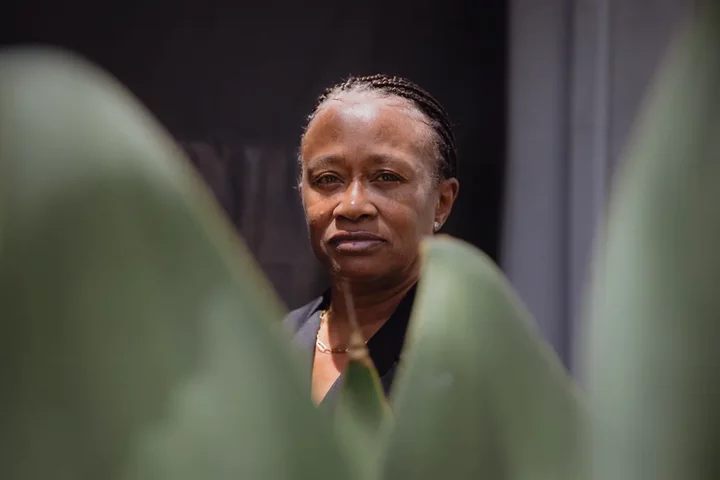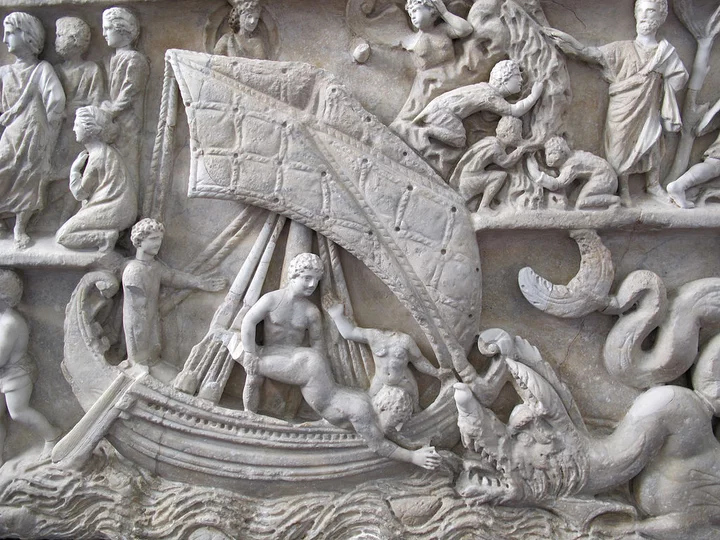OBITUARY: Aleta Joyce Hutcheson, 1953-2024
LoCO Staff / Tuesday, Oct. 8, 2024 @ 6:56 a.m. / Obits
Aleta Joyce Hutcheson, born in Willits, aged 71, passed away
peacefully at her home in Eureka on October 3, 2024. Her selflessness
and generosity were evident in every aspect of her life. Born on July
31, 1953. Aleta dedicated her life to her family and friends. She
always prioritized their needs above her desires, even giving up a
planned career in the military that she so much wanted. Instead, she
dedicated her life to taking care of her family and devoted many
years to community service.
Aleta spent most of her career as a dedicated worker for Rite Aid. She was, for decades, an enthusiastic fundraiser for various charities. A lover of reading and movies, Aleta viewed these hobbies as windows to the world she longed to explore. Additionally, she cherished collecting charming lapel pins and other small decorative items, each item holding a special place in her heart. She was also a artist loved to draw, She loved animals.
She attended Leggett Valley Primary School and graduated from Eureka High School, laying the groundwork for her lifelong commitment to community service. Though she did not pursue higher education, her impact on those around her was profound and far-reaching.
Aleta is survived by her beloved brother, Dwain A. Hutcheson, who resides in Baltimore MD. She was preceded in death by her dearly loved mother, Frances L. Hutcheson, and cherished brother, Timothy Hutcheson, and father, Edgar Elton Hutcheson. Her family finds solace in believing that she is now at peace and reunited with her loved ones.
Aleta’s life was a testament to the power of selflessness and caring. She will be deeply missed by all who knew her, leaving behind memories filled with love and selflessness.
###
The obituary above was submitted on behalf of Aleta Hutcheson’s loved ones. The Lost Coast Outpost runs obituaries of Humboldt County residents at no charge. See guidelines here. Email news@lostcoastoutpost.com.
BOOKED
Today: 3 felonies, 11 misdemeanors, 0 infractions
JUDGED
Humboldt County Superior Court Calendar: Today
CHP REPORTS
825 Mm199 S Dn 8.30 (HM office): Traffic Hazard
Us101 S / Sr36 Ofr (HM office): Traffic Hazard
Boulder Rd / Lake Earl Dr (HM office): Traffic Hazard
Us199 / Sr197 (HM office): Assist CT with Maintenance
700 Mm299 E Hum R7.00 (HM office): Assist with Construction
5500 Mm101 N Men 55.00 (HM office): Assist with Construction
ELSEWHERE
RHBB: Containment Jumps on Butler Fire in the Orleans Complex
Governor’s Office: Governor Newsom statement on the passing of Wallis Annenberg
RHBB: CalMatters: Newsom ramps up California redistricting threat as Texas weighs new Republican maps
Scary House Fire on McK’s Second Road Stomped Out Quick With Minimal Damage, Arcata Fire District Says
LoCO Staff / Monday, Oct. 7, 2024 @ 2:16 p.m. / Fire
Press release from the Arcata Fire District:
On October 6, 2024, at 3:33 P.M. units from Arcata Fire District, Fieldbrook Fire, Cal Fire and Blue Lake Fire were dispatched to a reported structure fire on the 2100 Block of Second Road in McKinleyville.
As units responded from their stations they could see a large column of black smoke from miles away. The first arriving engine reported two outbuildings on fire with fire spreading to a single- family residence and the surrounding vegetation. The engine attacked the fire extinguishing the fire on the residence and surrounding vegetation to prevent further spread. Additional, units arrived and attacked the fire in the two outbuildings. Personnel had the fire controlled in ten minutes. Arcata Fire personnel confirmed nobody was injured from the fire. Arcata Fire personnel remained on scene for about two hours extinguishing hot spots and conducting an investigation. Allied fire agencies covered the Arcata Fire District area during the incident.
The cause of the fire is undetermined but may have been from a faulty electrical strip plug. Damage estimates to the two outbuildings, house, and belongings is estimated at $10,000. Arcata Fire wants to encourage people to dispose of damaged strip plugs and extension cords.
If you have any questions, please contact the Arcata Fire District at 707-825-2000.
Photos: Arcata Fire District.
(UPDATING) Pro-Palestine Demonstrations Return to Cal Poly Humboldt on the Anniversary of Last Year’s Hamas Attack
Hank Sims / Monday, Oct. 7, 2024 @ 12:11 p.m. / Activism
UPDATE, 1:35 p.m.: The march has arrived at the Plaza, where more chants and speeches will presumably ensue.
All day, there has been no sign of any police interest in the demonstration, according to the Outpost’s Dezmond Remington.
###
UPDATE, 1:07 p.m.: On the move toward the Arcata Plaza now.
###
UPDATE, 1 p.m.: The march has paused at the corner of LK Wood and Library Circle, says Outpost reporter Desmond Remington. Cars passing are giving friendly honks of the horn. Among the chants being employed:
- “Judaism yes, Zionism no!”
- “Liberation is here!”
- “Biden did genocide!”
- “Kamala, Kamala, pick a side!”
Cal Poly Humboldt signage is picking up a little light, chalk-based graffiti:
###
Cal Poly Humboldt student Rick Toledo gets the march started.
UPDATE, 12:40 p.m. The march is underway. About 100 people are now participating, says Remington.
###
UPDATE, 12:30 p.m.:
Protesters at the D Street Community Center are milling about, getting ready to march. The plan is to march up LK Wood Boulevard and down to the Plaza, according to Outpost Remington, who’s at the scene.
“Humanity is very precious to me,” local nurse Pat Kamzler told Remington. “I’m very much for the vulnerable in society. They’re the ones getting hit. The 1% don’t care. I don’t think you need to be a nurse to care, you just need empathy… we’re marching so no one can ignore this anymore.”
“People are getting carpet bombed! We need to wake people up.”
###
Photos: Dezmond Remington.
ORIGINAL POST: Lost Coast Outpost reporter Dezmond Remington is in Arcata, where students and community members have gathered to protest for Palestine.
Around 40 people have gathered at the D Street Community Center bearing signs and preparing to march. Many people are wearing masks.
At the D Street Community Center around noon.
The demonstration was announced on the “Humboldt for Palestine” Instagram account on Sept. 25. The announcement read:
Cal Poly Humboldt students are calling for a walkout and March for Palestine off-campus on 10/7. We’ve been asked to share this to spread the word! Students, faculty and staff are being asked to leave campus at 12pm and gather at the Josiah Lawson mural on 1301 D St. The students at Cal Poly Humboldt continue to stand with Palestinian Resistance!
The demonstrations, of course, follow on the weeklong occupation of Siemens Hall at the end of last semester, which was finally broken up by police action.
Remington tells us that people have also gathered on the Cal Poly Humboldt quad. It was pretty small and calm just before noon. We’ll be updating this post.
At campus.
Do You, a Business Owner, Have a Story About Applying for State Government Contracts? The State Would Like to Hear It
Dezmond Remington / Monday, Oct. 7, 2024 @ 11:24 a.m. / Sacramento
Minority and small business owners will have a chance to tell the state of California about their experiences with government contracts at a meeting in Eureka on Nov. 12.
The California Department of General Services wants to know how business owners who run a certified small business or are women, minorities, LGBTQ people, and disabled veterans feel about their experiences getting state contracts. The CDGS is also trying to measure how much state contracting money is going towards small businesses.
They’re holding a meeting in Eureka partly because it’s the largest city on the North Coast and they want to reach as many communities as possible, but also because of its proximity to the Yurok and Wiyot tribal nations.
The funding for the study comes from State Assembly Bill 2019. Passed in 2022, it mandates that 25% of all money spent on state contracts go towards small businesses.
“We’re aiming to improve business for all businesses,” the Disparity Study Assistant Project Manager Maria Norris told the Outpost.
The meeting will be conducted by Mason Tillman Associates, a consulting fir. For more information on the study, click here. To register, go here.
At the End of Another Rip-Roaring Season, Humboldt’s Junior Drag Racers Reflect on Their Need for Speed
Dezmond Remington / Monday, Oct. 7, 2024 @ 10:30 a.m. / LoCO Sports!
Grant and Dax Williamsons’ Alcohol Abuse II. Photos: Dezmond Remington.
The car is long.
Really long.
The whole thing is a javelin, a narrow wedge that rides on foot-wide tires in the back and skinny little wheels in the front. The driver’s seat is a foxhole. The exposed engine lives as a permanent rear passenger and drinks nothing but grain alcohol.
Its torque? Practically instantaneous. The handling? Not good, but that doesn’t really matter because it only goes straight. But just how fast can the thing go?
It’s slower than a Prius.
Despite its aerodynamic stylings, the so-called Alcohol Abuse II only spits out around five horsepower and tops out at 85 miles an hour. It’s a junior dragster — a baby brother to the fire-eating V-8s that can rip through a quarter mile in less than 10 seconds —but it’s still a nasty little thing that can whip some heads back pretty hard.
Alcohol Abuse II is the shared love between Grant and Dax Williamson, a Eureka-based father and son duo that race junior drag events from the Samoa Drag Strip to Las Vegas. There’s a deep field of junior drag racers in Humboldt, ranging in age from as young as 8 to as old as 17. Races are an eighth of a mile long. The rules are a little complicated — for safety and to prevent winners from only being kids with parents who can afford to dump money into the cars, racers aged 13 and up can’t make the run in under 7.9 seconds under the National Hot Rod Association rules, and younger drivers have to go even slower. Drivers race in head-to-head matchups. False starts (called “red-lighting” in drag racing) are disqualifications. Racers compete for points, and the season runs from April to September.
Grant Williamson poses next to the Alcohol Abuse II.
Junior drag isn’t most racers’ first motorsport. Grant Williamson, 15, has been auto racing in some form or another practically since he could walk. He started on go-karts when he was 8. When he was 13, he had an opportunity to sit in a junior drag car at a racing event. He was captivated. Soon after, Grant and Dax drove to Canada and bought their first dragster.
Twelve-year-old Jeremy Johnson’s gateway was through his father Matt, a lifelong auto enthusiast who owns a heavily modified Honda Civic that makes 1,500 horsepower. Jeremy started racing dirt bikes when he was 4, and when he was 8 he tried a junior dragster for the first time.
All three of his younger brothers also race; Jeremy and his 9-year-old brother Logan went head-to-head several times last season. Jeremy won most of the matchups, but Logan snatched victory from his jaws in the final round of a competition once.
“I was very confident,” Logan said. “So I beat Jeremy, and he got really mad.”
Isabel Fuentes-Zittel stands next to her junior dragster. Photos: Dezmond Remington.
For Isabella Fuentes-Zittel, 15, this season’s top overall scorer at the Samoa Drag Strip, the start of her fascination was just as simple — all it took was a rip down the track in a family friend’s junior dragster and she wanted in. But the Fuentes-Zittels are not a racing family, and did not have the $8,000 to spend on a car plus the money for safety gear. Isabella had to raise the money herself, going around Eureka to get sponsorships.
“I had to make this whole list, this pitch of what I was going to say,” Isabella said. “I remember sitting in the living room, having my mom help me write it down, and I’m like ‘I can’t do this, Mom, I can’t do this!’ I was in tears. I would have panic attacks before going into the places, like, ‘Dad, help me, I can’t do this.’ And then I just did it, got it done, got it over with. It was rough, but we got through it…[what made it bearable was] the thought of being able to drive the car. I would just replay the moment of me going doing the track and think, ‘It’s all worth it.’”
Her dad Todd laughed. “She’s addicted and she doesn’t even know it.”
###
Drivers and their parents spend hours tightening bolts, replacing gaskets, changing fluids, swapping engines, installing clutches — the cars are babied, carried hundreds of miles in trailers full of tools and spare parts, before being forced to work harder than any single-cylinder engine should have to. Racers spend hours and hours maintaining the cars, traveling, sharpening their reaction times until the space between the go-light turning green and the accelerator being slammed into the carbon fiber frame measures only two-one hundredths of a second. The time investment adds up. Every parent said their children do well in school and make sure they know it’s their top priority, but for a couple of them the allure of professional drag racing outweighs all else. The Williamsons spent 26 weeks out of the last year on the road traveling.
“This is probably the biggest commitment I have as a 15 year old,” Grant Williamson said. “Even my job — still a big commitment, but this is probably the biggest thing, because this will really lead to my future and possibly a million-dollar paycheck.”
Isabella Fuentes-Zittel is dual-enrolled in community college and her high school and isn’t concerned about what she’ll do when she ages out of junior drag, though she does admit that it can be difficult to find time to do school and compete and maintain the car.
There’s camaraderie in the pits and on the bleachers between parents too, who get time to spend with their kids and chances to watch them win races.
“My car racing has always been a passion for me in my life,” Matt Johnson said. “And I’ve done eight seconds in the quarter mile at 175 miles an hour. It’s super freaking cool. But I’ve never felt as good as I feel when any one of those boys wins a race. And it could be a regular race, nothing special, and it’s still the coolest freaking thing in the world for me. It’s just those proud dad moments, and I get to have them pretty often.”
Many of them are also active participants in the process. Part of the byzantine scoring system is guessing how fast a car will run the race, but many parents assume that responsibility, considering factors like wind speed, air density, humidity, temperature, and any other million factors before “dialing it in.”
All the parents mentioned how grateful they were that so many other parents were so supportive of each other. When a part fails, another is always willing to give it to them, even when their kids are competing against one another.
“They’re all helpful parents out there,” Dax Williamson said. “If they see you need help — and we’ve lent out parts to other kids — then we’re going to race! Let’s have a good time, but let’s also have a good race. Let’s not win because you’re broken.”
Jeremy Johnson shows off some of his trophies.
“If you’re racing my kid and you need a motor, I’ll pull the motor off one of my other cars and give it to you,” Matt Johnson said. “And it’s happened for me. It’s happened for other parents. I’ve helped put motors and cars in between rounds that somebody gave them out of their car or trailer, just so they can make the next round.”
But none of this answers why any of them do it in the first place. Of course, it feels awesome to go fast and meet other people that also like to go fast, but there’s more to it than that for a lot of competitors.
“After racing, I was getting — not ego, but just happiness and confidence and the [knowledge] that I can do it,” Isabella said. “And then I get first place, and I’m like, ‘I can definitely do this. I can basically do anything.’ If only the girl who was driving and getting third could see me, her mind would probably blow up.”
‘I Would Have Been a Great Mom’: California Finally Pays Reparations to Woman It Sterilized
Cayla Mihalovich / Monday, Oct. 7, 2024 @ 7:46 a.m. / Sacramento
Geynna Buffington in Long Beach, on July 17, 2024. Photo by Zaydee Sanchez for KQED
Geynna Buffington knew she had little time to become pregnant once she was released from prison at age 40. For over a year, she tried to have a baby. She didn’t know pregnancy would be unlikely because of a procedure she had nearly a decade earlier.
In 1998, while Buffington was incarcerated at Central California Women’s Facility in Chowchilla, she underwent an “endometrial ablation” in order to treat what a prison doctor had told her was an abnormal pap smear. The procedure destroys the uterine lining and should not be done for people who have any desire for future childbearing, according to the American College of Obstetricians and Gynecologists.
But Buffington was not told how the procedure would affect her fertility.
“That is so humanly low for someone to make the decision that I don’t deserve to have children because I’m incarcerated,” said Buffington, 58. “I would have been a great mom.”
Buffington this month finally received recognition that the state robbed her of her reproductive freedom. Securing that acknowledgment came only after a long court battle to make her eligible for California’s historic reparations program for people who were forcibly sterilized while in state prisons, state-run hospitals and homes.
Her case could have wide-ranging implications for other people who were sterilized by the state and whose applications for the 2021 reparations program were rejected by the California Victim Compensation Board on technicalities.
The board four times denied Buffington’s applications for a $35,000 reparations payment, writing that ablations don’t qualify as sterilizations under the law because the procedure “was performed to treat her underlying medical condition” and “does not eliminate fertility.”
That all changed when an Alameda County Superior Court judge ruled earlier this year that the compensation board wrongfully denied her reparations, stating that “informed consent is a linchpin of the statute.”
In another signal that the program hasn’t lived up to its promise, Gov. Gavin Newsom on Sept. 30 signed a law that gives survivors who were previously denied until Jan. 1 to file an appeal. The compensation board has an additional 15 months to consider those appeals and process applications. The program, which was slated to conclude last month, will now end in January 2026.
The compensation board is a state agency that collects restitution and works to compensate victims of crime. It’s overseen by three members: State Controller Malia Cohen; Contra Costa County District Attorney Diana Becton; and a representative from Newsom’s cabinet, Government Operations Secretary Amy Tong.
The agency told CalMatters via an email that its executive officer, Lynda Gledhill, “is unable to give an interview regarding this particular matter as it is pending litigation.”
The email also noted that the agency was “sending letters to all claimants who had documentation available and received denials informing them of their ability to request an additional review of their denial.”
Thousands forcibly sterilized in California institutions
Starting in the early 1900s, more than 20,000 people – disproportionately poor women, people of color and people with disabilities – were involuntarily sterilized in state-run homes and hospitals under California’s eugenics laws. Those laws were repealed in 1979, but the practice continued. A 2014 state audit found that at least 794 people in state prisons underwent various medical procedures that “could have resulted in sterilization” between 2005 and 2013.
The most recent wave of sterilizations were connected to James Heinrich, a doctor who worked at Valley State Prison in Chowchilla. According to state prison medical records obtained by KQED, Heinrich ordered at least 80 ablations between 2006 and 2012. He did not perform the procedure on Buffington.
In 2013, The Center for Investigative Reporting, which first reported the sterilizations, quoted him saying that the state wasn’t paying doctors a significant amount of money for the sterilizations “compared to what you save in welfare paying for these unwanted children — as they procreated more.”
The government agency that oversees prison health care, in a 2014 memo obtained by CalMatters through the California Public Records Act, acknowledged that ablations and dozens of other procedures had “the potential for sterilization or diminished capacity for future conception.” Those procedures, the memo stated, must go through a heightened level of review “effective immediately.” It was sent to top prison health care officials just three months before the state concluded its audit on forced sterilization in California prisons.
“They knew we were coming,” said Hannah-Beth Jackson, the former state senator who requested the state audit. “I think that memo was clearly in response to either what they knew was going on, or what they needed to do in order to assure that they were covering their rear ends and make sure the doctors and providers understood that indeed, consent was required in advance.”
California in 2021 passed a reparations law carried by Assemblymember Wendy Carrillo to “acknowledge the wrongful sterilization of thousands of vulnerable people,” according to the legislation.
Since then, more than 75% of applicants were denied reparations, according to the compensation board.
Among the applicants who volunteered their demographic information, the majority self-identified as Black or African American. The compensation board approved payments to just 118 applicants as of Oct. 4. KQED and UC Berkeley’s Investigative Reporting Program previously spoke with six people who had ablations and whose applications were denied by the compensation board. At least four of the ablations were ordered by Heinrich.
Carrillo, a Los Angeles Democrat, acknowledged the rejections and delays during a hearing in August. “For all of the survivors and individuals that still have a pending case: know that you are heard, you are seen, the compensation board cares about what happened to you at a state institution where you have been denied the opportunity to be a parent, to be a mother – that should have been your choice…the compensation board is doing everything it possibly can to ensure that you have an answer to your appeal.”
‘Sterilization is unambiguous’

Assemblymember Wendy Carillo speaks to the crowd gathered for the Child Care Providers United Rally at the state Capitol in Sacramento on June 15, 2023. Photo by Julie A Hotz for CalMatters
After the compensation board’s fourth denial of Buffington’s application for reparations, her attorneys, WookSun Hong and John Moore, filed a petition in Alameda County Superior Court arguing that the board’s decision was not based on the law or science. She is one of four survivors to sue the compensation board.
Included in Buffington’s petition was a declaration from Cynthia Chandler, an attorney who helped draft the law and who now works for Alameda County District Attorney Pamela Price.
“We collectively and deliberately chose NOT to define or limit the methods of sterilization under which survivors could qualify for compensation as we appreciated that there are many different methods by which reproductive capacity can be destroyed and we did not want to inadvertently exclude a qualifying class from recovery under the compensation program,” wrote Chandler.
“That was a terrible thing that happened to us. And it doesn’t deserve to be overlooked.”
— Geynna Buffington
Judge Michael Markman on June 25 ruled that the compensation board abused its discretion and interpreted the reparations law too narrowly. He found that an endometrial ablation meets the requirement for compensation because there was no evidence that Buffington gave her informed consent prior to undergoing the procedure.
Additionally, Markman wrote that the online medical source the compensation board relied on to support its justification for Buffington’s denials did “not suggest that fertility is maintained after the procedure.”
He ordered the compensation board to reconsider Buffington’s application “without mistakes of law.” Roughly two months later, the compensation board approved her application.
“The court determined that ‘sterilization’ is unambiguous and is the permanent inability to reproduce,” the compensation board wrote in its decision to release the money. “The court sided with Geynna B. and determined that all procedures that result in sterilization are barred where there is lack of informed consent.”
Last week — four months after the Alameda court ruling in her favor — she received her payment.
“I felt like some justice was being done – that I was being seen,” Buffington said. “That was a terrible thing that happened to us. And it doesn’t deserve to be overlooked.”
Advocates for the survivors commended the court decision and said it’s a first step to opening the door for relief for others who were denied.
“This ruling indicates the need for wide sweeping justice that was not met,” Chandler said.
Will the board release reparations to others?
Today, Buffington works as a certified peer support specialist for people in recovery and an assistant director at Footprints Around the World Inc., a nonprofit organization that serves homeless and low-income families in Los Angeles. She plans to put away the money she received in reparations for her retirement.
“This is one of the cases where an underprivileged person who doesn’t have anything was prejudiced and treated like a number and then set aside,” said Hong, one of her attorneys. “To me, it’s significant that a government agency acknowledged their mistake, but it’s also sad that it took a court order to rectify their mistake.”
“They were hellbent on denying this claim, I believe, because they know they have failed an entire class of people.”
— Attorney Cynthia Chandler, who helped draft the law
Chandler said she’s glad that the court put “a monkey wrench” in the compensation board’s process.
“They were hellbent on denying this claim, I believe, because they know they have failed an entire class of people,” she said. “I hope that this ruling provides some level of precedent to force the compensation board to be accountable.”
The compensation board has not said how it plans to apply the court order to other survivors who were wrongfully denied reparations. Without a new policy in place, advocates have expressed concern that survivors could continue to face barriers to receiving compensation, including time, money and legal resources.
“I’m anxious to know what this means for the hundreds of other survivors who were denied because the state said that the procedure they had was not sterilizing,” said Jennifer James, an associate professor of sociology at UC San Francisco and member of the California Coalition for Women Prisoners who has assisted survivors with their applications. “I hope that the compensation board will proactively change their decisions and award them compensation so that they don’t have to seek legal support.”
###
Cayla Mihalovich is a California Local News fellow. She began this reporting with KQED and the Investigative Reporting Program at the UC Berkeley Graduate School of Journalism. This story was supported by the Fund for Investigative Journalism.
CalMatters.org is a nonprofit, nonpartisan media venture explaining California policies and politics.
PASTOR BETHANY: Jonah, Part II — Or, Denial is the Reason We Sink to the Bottom
Bethany Cseh / Sunday, Oct. 6, 2024 @ 7 a.m. / Faith-y
A mope gets the heave-ho. Image: Sailko, CC BY 3.0, via Wikimedia Commons
PREVIOUSLY:
###
Wow, you’ve been through some hard stuff, haven’t you? Loss seems to follow you, or maybe it’s that one loss that seems to define you, mapping your path through grief or blame or resentment. “Until we make the unconscious conscious, it will direct our life, and we will call it fate,” psychologist Carl Jung once wrote.
A lot of us do this often – make the big fish of our life into our entire storyline (as I mused in last week’s post on the biblical book of Jonah). Sometimes this big fish becomes everything for us, and all we can see. But sometimes it can also become a turning point. Sometimes venturing into the big fish, that depth of insurmountable loss, is what invited change.
I’ve found it’s often in those deepest places, way down to the bottom of myself, that I realize God has been with me the whole time – at the bottom of the barrel and the end of my rope. When I’m in a place of desperation, there’s nowhere left to turn but to God.
Jonah found God in the deep, when everything else was gone. The Hebrew word, yarad, is used three times in this chapter of Jonah. It means to go down or to sink. It’s like the writer wants us to visualize sinking. Sinking can be something that happens to us and it can also be something that we allow to happen to us. Sometimes we sink to avoid reality and responsibility, and sometimes we sink because we’ve been pushed down.
Jonah sank to avoid. He got on that ship to avoid what he was asked to do: to warn Nineveh. But as he sailed away from the direction he was supposed to go, the wind and the waves became so destructive that the sailors began throwing their livelihood and financial well-being overboard just to survive. And Jonah responds by totally avoiding all the communal emotional turmoil and fear by sinking below deck. As these sailors were struggling and shouting and praying, Jonah says, “Peace out” and sinks to the bottom of the ship to sleep it off.
Sometimes when life feels like it’s too much because of our own choices — the million little harmful decisions that have grown into a huge storm — it feels easier to numb and avoid and ignore the chaos we’ve created around ourselves, like we’re sinking to the bottom and going to sleep so we can avoid the destruction we’ve caused. And our people, those we love and those we might not even know, currently live through and feel the consequences of our choices while we sleep it off.
I’ve found that once I realize the destruction my choices have caused, there’s this temptation to believe I’m worthless or no good. Instead of seeking forgiveness or admitting wrongs, some people tend to deflect and choose not to take responsibility, which is what Jonah does after the sailors discover the storm was his fault. He simply tells them the good Sunday School answer that he worships the God of heaven who made the sea and dry land, like he’s spouting off John 3:16 from memory but has never taken it to heart.
Jonah knows the right words to say but they seem to mean nothing to him.
And he says, “Fine, throw me overboard because I’m no good and worthless.” Not, “I shouldn’t have brought you into this and I’m sorry for the harm I’ve caused you.”
So they throw him overboard and this big fish swallows Jonah and becomes his temporary home.
(I know, I know. Why would anyone believe such a far-fetched story? You might not. No big deal! But there’s a type of wisdom we can apply from ancient stories written thousands of years ago).
I see the big fish as an act of grace and mercy. God didn’t have to rescue Jonah or even need to empower this whiny, self-absorbed, small-minded man to accomplish anything. And I don’t think God was surprised by Jonah going the opposite direction — to jump overboard, to sink below and do anything it took to avoid this invitation.
For three days and nights, I imagine Jonah sitting in his thoughts and replaying his life like a movie. Jonah’s life wasn’t this tiny snapshot we get here. His life contained loss, death, rejection, infidelity, falling in love, disappointment, abuse, weddings and celebrations, hangovers, embarrassing moments, dread and fear, arguments, worship, prayer, dinner parties – you know, everything your life contains.
Over three days he thought about his life and he began to wake up to what was instead of what wasn’t. He’d been sleepwalking through his life, simply existing in his relationships, in his faith, in his work.
If you got alone for three days and nights with only your thoughts and prayers, what would you wake up to? Have you been slogging through your relationships? Numbing out through mindless scrolling? Being physically present but not actually connected? What might your unconscious becoming conscious show you if you sat in the lonely silence for a while?
(You are beloved.)
I don’t know why that loss has demanded so much from you these years, but I do know it’s not your whole story, and to sink into numbing sleep to avoid that storm isn’t helping anymore. But it can be in those dark places of loss, the ones at the end of your rope, where Love and grace meets you and wakes you up to re-engage your life once again.
###
Bethany Cseh is a pastor at Arcata United Methodist Church and Catalyst Church. Follow her on Instagram.

